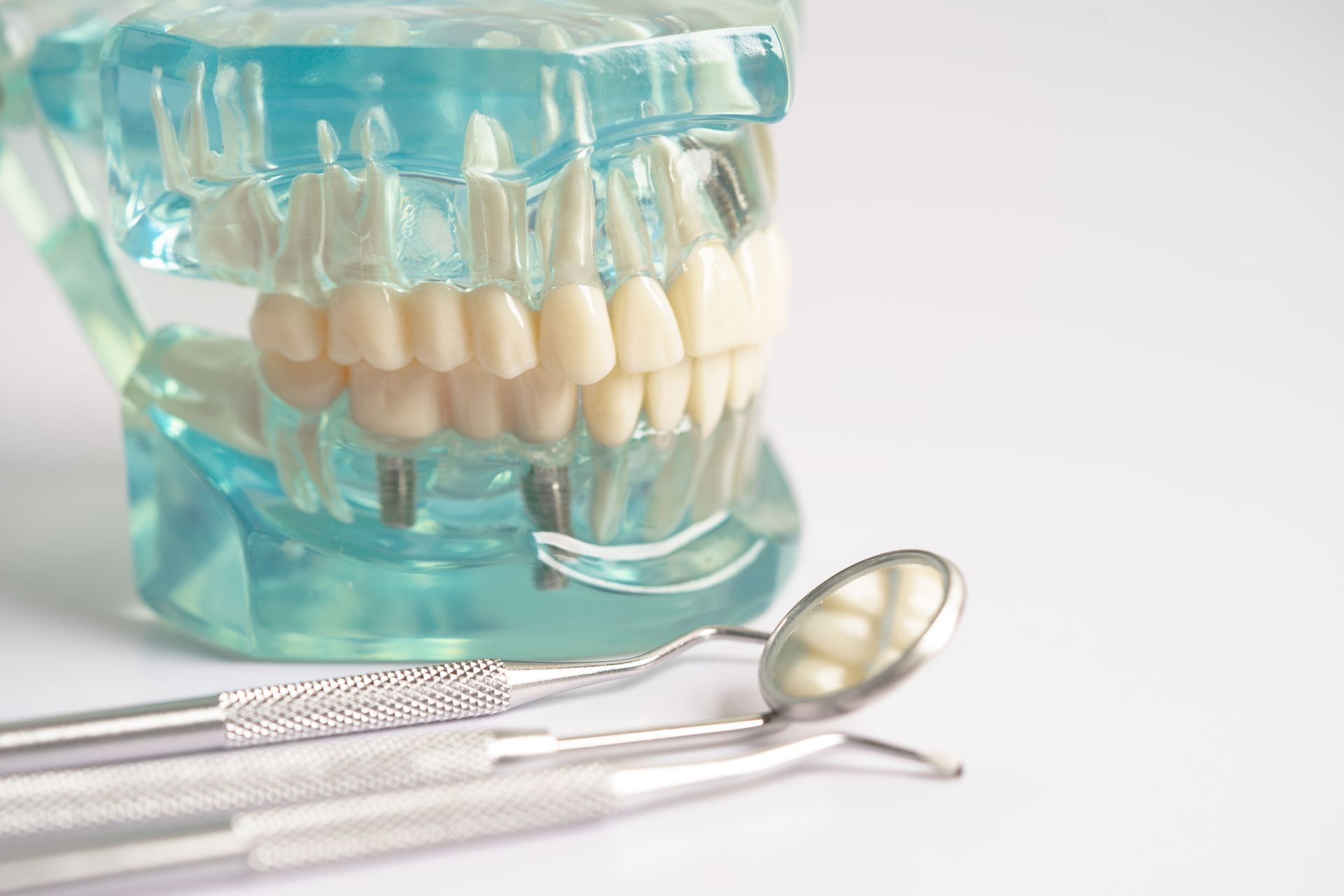Effective Home Remedies to Soothe Wisdom Tooth Pain Fast

At West Valley Dental, we help people with wisdom tooth pain every day. We see mild “coming-in” pain, sore gums that trap food, and fully impacted teeth that need removal. In this guide, we share the same, safe steps we teach patients in the office. You’ll get quick tips first, then short explanations. This is general advice, not a diagnosis. If your pain is severe, you have trouble swallowing or breathing, or you think you have an infection, get dental or medical help right away.
Quick Relief Steps (Do These First)
- Cold compress: Hold a cold pack or a bag of ice wrapped in a thin towel on your cheek for
10–15 minutes. Rest
10–15 minutes. Repeat for an hour or two.
- Salt water rinse for wisdom tooth pain: Mix
½ teaspoon of salt in
8 oz (1 cup) warm water. Swish gently for
30 seconds. Spit. Do this after meals and 3–4 times a day.
- Over-the-counter pain relievers: Take
ibuprofen (if safe for you) to reduce pain and swelling, or
acetaminophen to reduce pain. Follow the label. Do not exceed the daily limit.
- Topical oral anesthetic: A small amount of
benzocaine gel can numb sore gum tissue. Use sparingly and as directed.
- Soft foods + fluids: Choose cool or lukewarm soft foods. Drink water often.
- Sleep with your head raised: Use extra pillows at night to lower throbbing.
These steps help most people feel better fast while they plan a visit.

What’s Causing the Pain?
Erupting vs. Impacted Wisdom Teeth
Wisdom teeth usually show up between ages 17 and 25.
- If there is
space, the tooth may come in normally. You may feel sore for a few days.
- If the tooth is impacted (stuck under gum or bone, or tilted), it can push on other teeth and make the jaw sore.
Gum Inflammation (Pericoronitis)
A tooth that is half in and half covered by gum can have a tiny gum flap over it. Food and bacteria can get trapped under this flap. The gum gets red, swollen, and tender. You may notice a bad taste or have trouble opening wide.
Pressure on Teeth and Muscles
Even without infection, a tight fit can strain the ligament around nearby teeth and the jaw muscles. That pressure can cause aching that comes and goes.
Fast, Dentist-Approved Home Remedies
Cold Compress: How Long and How Often
Cold calms swelling and numbs the area. Place a cold pack on your cheek over the sore spot for 10–15 minutes. Then take it off for 10–15 minutes. Do a few rounds. Do not put ice right on your skin. Do not press hard.
Warm Saltwater Rinse: Easy Recipe
Mix ½ teaspoon salt with 1 cup warm water. Swish gently for 30 seconds and spit. Use it after meals and 3–4 times a day.
Why it helps: Saltwater soothes the gum and helps flush out debris from under the flap. If swishing hurts, tilt your head so the rinse reaches the back without force.
OTC Pain Relief: Ibuprofen vs. Acetaminophen
- Ibuprofen (Advil/Motrin) helps pain
and swelling.
- Acetaminophen (Tylenol) helps pain (not swelling).
Some adults get better relief by alternating them. Only do this if you can keep track of doses and stay within label limits. Check your other medicines (like cold meds) so you don’t double up on acetaminophen. If you have ulcers, stomach, liver, kidney, or bleeding problems, or you’re on blood thinners, ask a dentist or doctor first.
Topical Gels and Sprays
A thin layer of benzocaine gel can numb sore gum for short periods. Use a pea-sized amount on a cotton swab. Do not overuse. Do not use in children under 2. If you are pregnant or nursing, ask your provider before using gels.
Mouthwash Options (Alcohol-Free Is Better)
An alcohol-free antiseptic mouthwash can lower bacteria without stinging. Look for “alcohol-free” on the label.
Diluted hydrogen peroxide (short-term only): If a dentist recommends it, you can mix
equal parts 3% hydrogen peroxide and water, swish briefly, then rinse with plain water. Do
not swallow. Do
not use this for many days in a row, as it can irritate tissue.
Sleep With Your Head Elevated
Use two pillows or a wedge pillow. This lowers fluid pressure around the tooth and can reduce night-time throbbing.
Gentle Oral Care While It Heals
Brushing Near a Partially Erupted Tooth
Use a soft-bristle brush and a sensitive-gum toothpaste. Angle bristles toward the gumline. Use small, slow circles. Let the brush do the work. If it hurts to brush the spot, brush nearby teeth and finish with a gentle rinse.
Cleaning Trapped Debris
Food under the gum flap keeps the area sore. After saltwater rinsing, you can:
- Use a
small interdental brush to gently sweep the area, or
- Use a bulb syringe with lukewarm saltwater to flush the pocket.
- Be gentle.
Do not try to lift the flap.
Do not scrape.
Helpful Tools
- Small-head, soft brush for back corners.
- Waxed floss or floss tape (glides easier).
- Water flosser on
low setting if you have one.
What to Eat (and Avoid)
Good Choices
Pick soft, cool, or lukewarm foods:
- Yogurt, applesauce, smoothies (no seeds), oatmeal
- Scrambled eggs, mashed potatoes, soft pasta
- Blended soups (not hot), cottage cheese
- Sip
water often. Good hydration keeps tissues moist and helps clean the area.
What to Skip
- Seeds, nuts, popcorn, chips, crunchy snacks (they get stuck)
- Very hot foods or drinks (can irritate gum)
- Alcohol (dries the mouth and slows healing)
- Caffeine late in the day (may increase clenching)
- Smoking or vaping (raises dry-socket risk after extractions and slows healing)
What Not to Do
- Do not place
aspirin on your gum. It can
burn the tissue.
- Do not use strong heat on your jaw in the first 24 hours of a flare-up.
- Do not poke under the gum flap or try to “drain” anything yourself.
- Do not exceed medicine dose limits or mix drugs without reading labels.
When to Call a Dentist
Call a dentist soon if you notice:
- Fever, bad taste, pus, or swelling that is getting worse
- Pain that lasts more than a few days or keeps coming back
- Trouble opening your mouth (jaw stiffness)
- Swollen face or neck
- Trouble swallowing or breathing →
Go to urgent or emergency care now
Home care can calm symptoms. But repeat pain often means the tooth is impacted, the flap keeps trapping food, or an infection is starting. A dentist can fix the real cause.
For urgent situations, learn more about our dental emergency services in Tukwila.
In-Office Treatments That Help
Professional Cleaning and Irrigation
Your dentist can gently flush and clean under the flap. This removes the trapped food and bacteria that keep the gum inflamed. Many people feel relief quickly after this. Learn more about our comprehensive dental cleanings and exams in Tukwila.
Antibiotics: When They Help (and When They Don’t)
If there is a true infection, antibiotics may be prescribed. They can calm the infection but do not fix the cause, like an impacted tooth or a trapping gum flap. You may still need a procedure to stop flare-ups.
Operculectomy vs. Extraction
- Operculectomy: The dentist removes the small gum
flap so food can’t hide there. This helps when the tooth has room to finish coming in.
- Extraction: If the tooth is impacted or keeps getting infected, removing it often gives the best long-term result.
- Your dentist will review your X-rays, symptoms, and health history to pick the safest option.
Your dentist will review your X-rays, symptoms, and health history to pick the safest option. For complex cases, we offer wisdom teeth removal in Tukwila with various sedation options to ensure your comfort.
Referral to an Oral Surgeon
If the tooth is deep, angled, or close to a nerve, you may be sent to an oral surgeon. Surgeons remove complex wisdom teeth and manage higher-risk cases. Our oral surgery services in Tukwila can handle both simple and complex extractions.
Preparing for an Appointment
What to expect:
- A short talk about your symptoms
- An
exam to check the gum and jaw
- X-rays to see tooth position, roots, and nearby structures
Questions to ask:
- Do I need
cleaning under the flap, an
operculectomy, or an
extraction?
- What are the
costs,
risks, and
recovery time?
- Can we plan the timing around school or work?
- What is the
short-term pain plan while I wait?
While you wait: Keep using the cold compress, warm saltwater rinse, soft foods, head elevation, and OTC pain relievers as directed.
If you're experiencing dental anxiety about the procedure, we offer solutions for relieving dental anxiety in Tukwila.
If You Just Had a Wisdom Tooth Removed
Normal Healing vs. Warning Signs
It’s normal to have swelling and soreness for 2–3 days. Some bruising is okay. Pain should slowly improve each day.
Call your dentist if pain
worsens after it first got better, if you have a
foul taste, or if swelling grows after day 3. These can be signs of a problem, like
dry socket.
Aftercare Basics
- Gauze and clot: Bite gently on gauze as told to help form a stable clot.
- Protect the clot: Avoid
straws, spitting, smoking, or vaping for
24–48 hours.
- Saltwater rinses after 24 hours: Rinse
very gently with warm saltwater after meals and 3–4 times a day.
- Activity and sleep: Take it easy for a couple of days. Sleep with your head elevated.
- Pain control: Use ibuprofen and/or acetaminophen as advised. Use a cold compress for short periods on day 1.
Special Situations
Pregnancy
During pregnancy, many pain gels and NSAIDs are not advised. Acetaminophen is often preferred for pain. Use saltwater rinses, cold compresses, soft foods, and gentle brushing. Always check with your OB and dentist first.
Braces or Aligners
Appliances can trap food near the back teeth. Rinse after every meal. Use interdental brushes around brackets. A water flosser on low can help. If you feel new pressure behind molars or crowding, tell your orthodontist and dentist.
Chronic Conditions or Blood Thinners
If you take blood thinners, or have ulcers, liver, or kidney problems, check with your dentist or doctor before using ibuprofen or before any procedure. Your care plan may need changes to keep you safe.
Natural Remedies: What Actually Helps (and How to Use Them Safely)
Clove Oil (Eugenol)
- Clove oil can numb sore gum for a short time. Always dilute it.
- Mix
1 drop clove oil with
1 teaspoon of a
carrier oil (like olive oil).
- Dip a cotton swab, then
dab lightly on the sore gum (not deep under the flap).
- Use sparingly. Too much can
irritate tissue. Do not swallow.
Peppermint Tea Bag Compress
Steep a peppermint tea bag. Let it cool, then chill it. Hold it against your cheek over the sore area. This can feel soothing.
Turmeric Paste
Mix a pinch of turmeric with a few drops of water to make a soft paste. Dab on the gum for a minute or two, then rinse. Stop if it irritates your mouth.
Reminder: “Natural” does not always mean safe. These are add-ons. They do not replace dental care, especially if you have signs of infection.
Prevention and Long-Term Care
Regular Checkups and X-rays
Routine exams and periodic X-rays help your dentist spot early crowding, impaction, or cysts. Early planning often means easier treatment and fewer painful flare-ups. Schedule your next visit for general dentistry in Tukwila.
Keep the Area Clean
- Brush the back corners carefully.
- Rinse after meals with
warm saltwater or an alcohol-free mouthwash.
- Gently flush around a partially erupted tooth to remove food.
If pericoronitis keeps coming back, your dentist may suggest removing the gum flap or the tooth to prevent repeated problems.
Helpful Resources You Can Use Today
Printable Pain-Relief Checklist
- Cold compress: 10–15 minutes on / 10–15 minutes off
- Warm saltwater rinse after meals (½ tsp salt in 8 oz warm water)
- OTC pain reliever as labeled (ibuprofen or acetaminophen)
- Thin layer of benzocaine gel for short-term numbing
- Soft, cool/lukewarm foods;
drink water often
- Head elevated during sleep
Symptom Tracker (Bring to Your Visit)
- When did the pain start?
- Swelling: none / mild / moderate / severe
- Bad taste or pus: yes / no
- Fever or chills: yes / no
- Can you open your mouth fully? yes / no
- What helped? (cold pack, rinse, OTC meds, rest)
- Does food get stuck near the gum flap? yes / no
Need help now? We offer same- or next-day visits when we can for urgent wisdom tooth pain. Contact us, and we'll guide you to the safest next step. You can also learn more about our practice and why you should choose us for your dental care needs.

Frequently Asked Questions
How long does wisdom tooth pain usually last?
Mild pain from a tooth coming in can fade in 3–5 days. If food keeps getting trapped or an infection starts, pain can last until a dentist cleans the area or treats the tooth.
Can wisdom tooth pain come and go?
Yes. It often flares when debris gets under the gum flap and calms after rinsing. If it keeps coming back, see a dentist.
Will antibiotics alone fix it?
Antibiotics can control infection, but they do not solve impaction or a trapping gum flap. You may still need cleaning, flap removal, or extraction for a lasting fix.
Do I need all four removed?
Not always. It depends on space, the angle of the teeth, your bite, and your symptoms. Your dentist will review your X-rays and advise you.
How do I sleep better with wisdom tooth pain?
Use a cold compress before bed, elevate your head, choose soft foods, and take OTC pain relievers as labeled. Avoid caffeine late and skip smoking or vaping.










